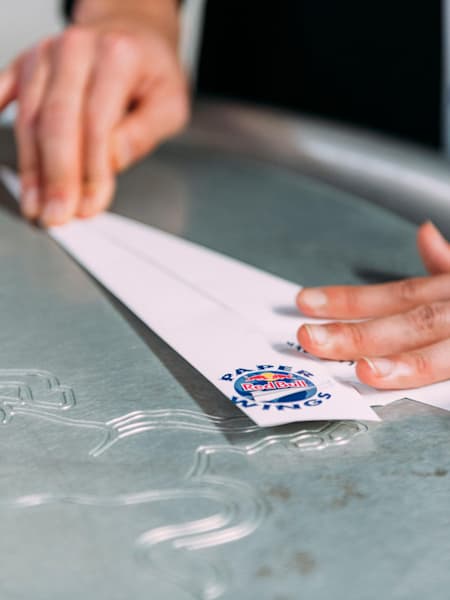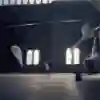Commercial aviation technology is so advanced that airline passengers often post stories on their social channels about the heroic ways they overcame the tedium of sitting patiently in relative silence for hours on end. Once the in-flight safety video is over, it's easy to tune out the remarkable confluence of physics and engineering that's happening as the plane takes flight.
Red Bull Paper Wings, the world's largest international paper plane competition and the official paper plane world championship, is a celebration for students across the globe who continue the ancient tradition of staring at the sky and wondering how to make things fly.
The premise is simple – take a standard piece of A4 office paper, fold it without rips or tears to create a flying machine, and enter the competition of your choice: Distance, Airtime or Aerobatics. The first two categories are fairly straightforward, as participants take aim at the existing world record holders. Aerobatics is a creative category that's about sensational tricks.
Red Bull Paper Wings was first held in 2006 and steadily grew in popularity, with subsequent competitions in 2009, 2012, 2015 and 2019. In 2022, regional Qualiflyers for Distance and Airtime are being held in numerous countries around the world. Meanwhile, in the Aerobatics category, aspiring champions are getting creative with their paper planes at home and uploading their mastery via digital video submissions. The national finalists in all three categories will be invited to Salzburg, Austria, to compete in the World Final at the iconic Hangar-7.
Red Bull Paper Wings 2019 New Zealand competitors work on their designs
© Oscar Keys/Red Bull Content Pool
If you want to earn a PhD in paper planes, look no further than John M Collins, the man who literally wrote the book on paper plane construction: The World Record Paper Airplane and International Award Winning Designs. Collins holds the world record for longest paper plane flight distance and he credits his success on marrying his love of aeronautical engineering to the ancient art of origami.
Origami, a Japanese term for ceremonial and recreational paper folding, is comprised of the words 'ora' (to fold) with 'kami' (paper). Its roots trace back to Japan in the late 1600s, with formal instructions emerging in 1797's Hiden Senbazuru Orikata by Akisato Ritō. Some paper-plane enthusiasts trace the art even further, all the way back to Chinese kites some 2,000 years ago, but those flying machines were made from wood and cloth. Paper was invented in China around 105AD but remained too expensive for most people for centuries.
According to the Smithsonian National Air and Space Museum, the modern paper plane is a much more recent creation, credited to Jack Northrop, co-founder of Lockheed Aircraft Corporation in the 1930s.
Mastering the art of paper plane-making takes a lot of trial and error, but, thankfully, most failed designs can land safely in the nearest recycle bin. Paper plane design isn't a series of random folds; each carefully placed crease creates paper aeroplane components – including the airfoil, nose, wings, rudder, hull, fins and tail. These help to deal with the laws of physics, including buoyancy, stability, flight angle, lift position, drag, dihedral arc and centre of gravity.
Paper planes diverge from today's traditional aircraft because they aren't propelled through the air by an onboard engine. Paper gliders is a more fitting description because the human arm handles the work of a jet engine or rocket booster to thrust the craft into motion. Each component maximises lift and keeps the air pressure below the wings greater than the pressure above. Once that balance shifts, gravity does its work to bring your plane back to Earth.
Do you have what it takes to take flight in Red Bull Paper Wings 2022? Visit the official website to find Airtime and Distance Qualiflyers near you, and for more information on entering the Aerobatics category by submitting a digital video.






